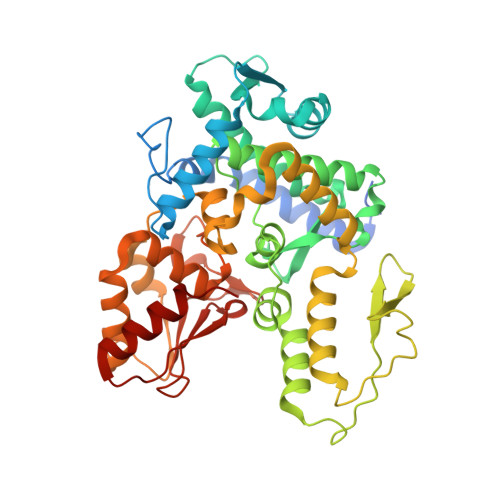Expanding the inhibitor space of the WWP1 and WWP2 HECT E3 ligases.
Dudey, A.P., Rigby, J.M., Hughes, G.R., Stephenson, G.R., Storr, T.E., Chantry, A., Hemmings, A.M.(2024) J Enzyme Inhib Med Chem 39: 2394895-2394895
- PubMed: 39223706
- DOI: https://doi.org/10.1080/14756366.2024.2394895
- Primary Citation of Related Structures:
9EQH, 9EQK - PubMed Abstract:
The HECT E3 ubiquitin ligases 1 (WWP1) and 2 (WWP2) are responsible for the ubiquitin-mediated degradation of key tumour suppressor proteins and are dysregulated in various cancers and diseases. Here we expand their limited inhibitor space by identification of NSC-217913 displaying a WWP1 IC 50 of 158.3 µM (95% CI = 128.7, 195.1 µM). A structure-activity relationship by synthesis approach aided by molecular docking led to compound 11 which displayed increased potency with an IC 50 of 32.7 µM (95% CI = 24.6, 44.3 µM) for WWP1 and 269.2 µM (95% CI = 209.4, 347.9 µM) for WWP2. Molecular docking yielded active site-bound poses suggesting that the heterocyclic imidazo[4,5- b ]pyrazine scaffold undertakes a π-stacking interaction with the phenolic group of tyrosine, and the ethyl ester enables strong ion-dipole interactions. Given the therapeutic potential of WWP1 and WWP2, we propose that compound 11 may provide a basis for future lead compound development.
Organizational Affiliation:
School of Biological Sciences, University of East Anglia, Norwich, UK.
















